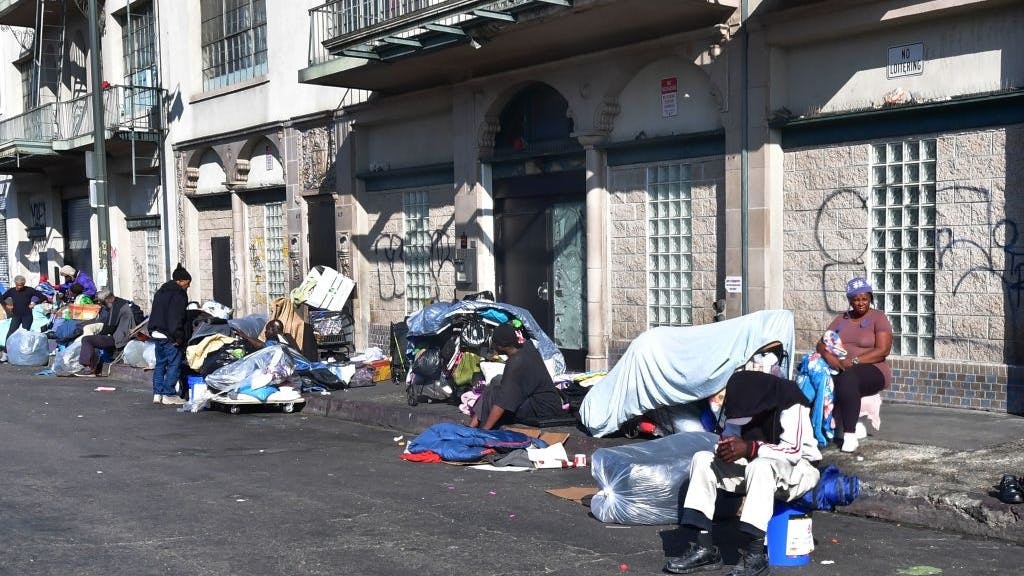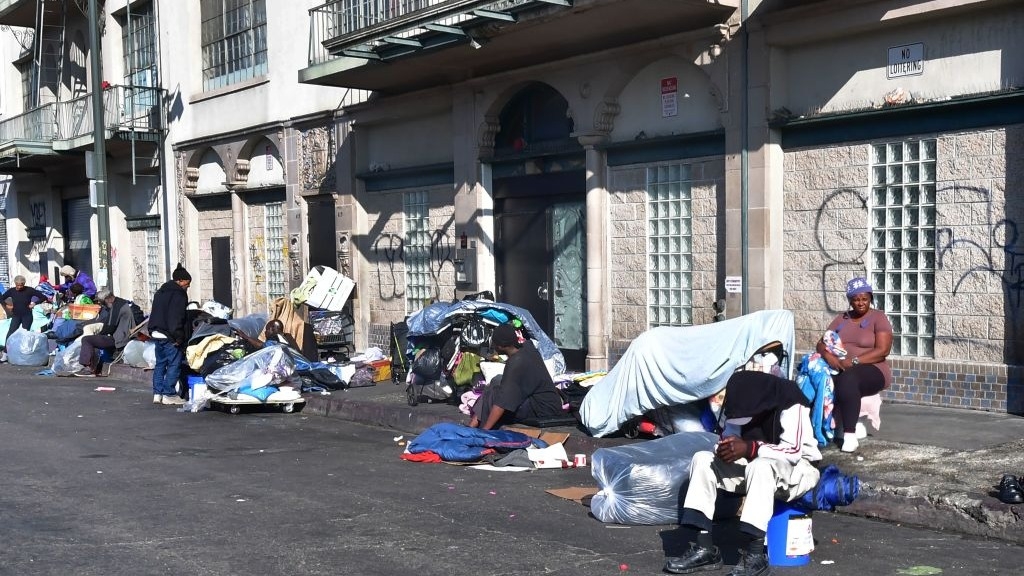Wealth inequality has become a 2020 talking point, with candidates proposing wealth taxes and universal basic income. Here’s just how unequal things are in the US, and how we got here.

The Story
In America, all the top 1% see are dollar signs. Everyone else...not so much.
The Background
Income and wealth inequality in the US have been creeping up for decades. In 2018, income inequality hit a 50-year high. It’s measured by something called the Gini Index. A score of 0 represents a population where incomes are perfectly evenly distributed. A score of 1 represents a population where one household gets all the money. In 2018, the number was 0.485.
Help me put that number in context please?
For reference, when the Census Bureau first started using the Gini Index in 1967, the US’s score was 0.397. The wealth gap in the US is even starker – the top 10% of Americans now control 70% of the country’s wealth. That’s up from about 60% in the late 1980s. Basically the richest Americans continue to control more of the country’s wealth, while everyone else controls less of it. No other wealthy developed nation has comparable rates of inequality.
What about the economy? Isn’t it doing well?
Yes. As of July 2019, the economy was in its longest economic expansion ever. Unemployment is at a 50-year low and the poverty rate has fallen every year for the past few years. But the income and wealth gaps persist.
Why?
That’s the big issue...
The Big Issue
The question is, how did the gap between the richest and poorest Americans get so big? There are a lot of different factors.
Decline in housing wealth. Millions of Americans lost homes during and after the Great Recession in 2008. And home prices have shot up since then. That means 1: fewer middle-class Americans own homes and can’t afford to jump into the housing market. Especially black Americans. And 2: wealthier homeowners have even more wealth thanks to increased home values.
The stock market. Fewer middle-income Americans own stock than before the recession. The Federal Reserve says this is because more of them took jobs that didn’t offer retirement plans. Student loan debt and high health care costs also kept people from investing or saving for retirement. Aka even though the stock market is so hot right now, many middle-class Americans aren’t in on the action.
Stagnant incomes. The federal minimum wage has held steady at $7.25 since 2009. And adjusted for inflation, the median household income is basically the same as it was 20 years ago.
The skills disparity. Advancing technology has eliminated certain “middle-skilled” jobs (think: manufacturing, administrative work) and put a premium on highly-skilled workers (think: lawyers, doctors). These “elite professionals” have reportedly been the main driver of growth in the country’s top earners.
Government policy. Some argue that government policies on everything from disaster aid to lobbying favor those who are wealthier, exacerbating the gap between the rich and poor. Analysis also shows that the 2017 tax code overhaul primarily benefits wealthy Americans.
And one more thing: even the inequality is unequal.
What do you mean?
White family wealth is seven times higher than that of black families, and five times higher than Hispanic families. This is a reality that can be traced all the way back to policies that continued to discriminate against black people post-slavery. Especially housing policies that excluded black people from taking out home loans. That, plus current zoning policies that effectively divide communities racially, has led to largely segregated neighborhoods we still see today. Since homeownership is associated with the opportunity to build wealth, these policies have a ripple effect that can span generations.
The Debate

The Impact
On health...one study found that while Americans are generally living longer, the rich live longer than the poor. Another study asked Americans to self-report how healthy they were. Surprise – white men in the highest income bracket were the healthiest.
On education…higher wealth is associated with higher rates of college attainment. And higher levels of education literally translate to bigger paychecks.
On economic mobility...the American Dream – or the idea that everyone has a shot at improving their economic standing within a generation – has become less of a reality. Now poverty is more likely to span generations, impacting the ability of many Americans to spend and invest.
On politics...recognizing wealth inequality as a political issue transformed both the Democratic and Republican parties in the past decade.
President Trump won the White House in part by appealing to working-class voters fed up with “elites.”
Progressives like Sen. Bernie Sanders (I-VT) and Sen. Elizabeth Warren (D-MA) have shifted the Democratic party to the left by popularizing policies aimed at addressing the wealth gap – things like Medicare for All and a tax on the rich.
Entrepreneur and 2020 candidate Andrew Yang has focused a large part of his campaign on the idea of a universal basic income, giving every American adult $1,000 a month, no questions asked.
Then there’s the influence of lobbying – wealthy Americans are able to use that wealth to lobby for policies that are to their advantage across industries like health care and finance.
BTW, we Skimm’d the idea of universal basic income in Skimm Notes. You'll learn: ✷ The history behind universal basic income✷ Where in the world it's been put to the test✷ Why critics say it's a nice dream, but an uphill battle
theSkimm
The gap between the richest Americans and everyone else is the largest it’s been in decades. Addressing this problem has become a primary talking point, especially among Democrats, in the 2020 presidential election. And Democrats are more likely than Republicans to say reducing inequality is a top priority. How the country addresses this issue in the near-term could come down to whoever wins the White House in November.
Live Smarter
Sign up for the Daily Skimm email newsletter. Delivered to your inbox every morning and prepares you for your day in minutes.
